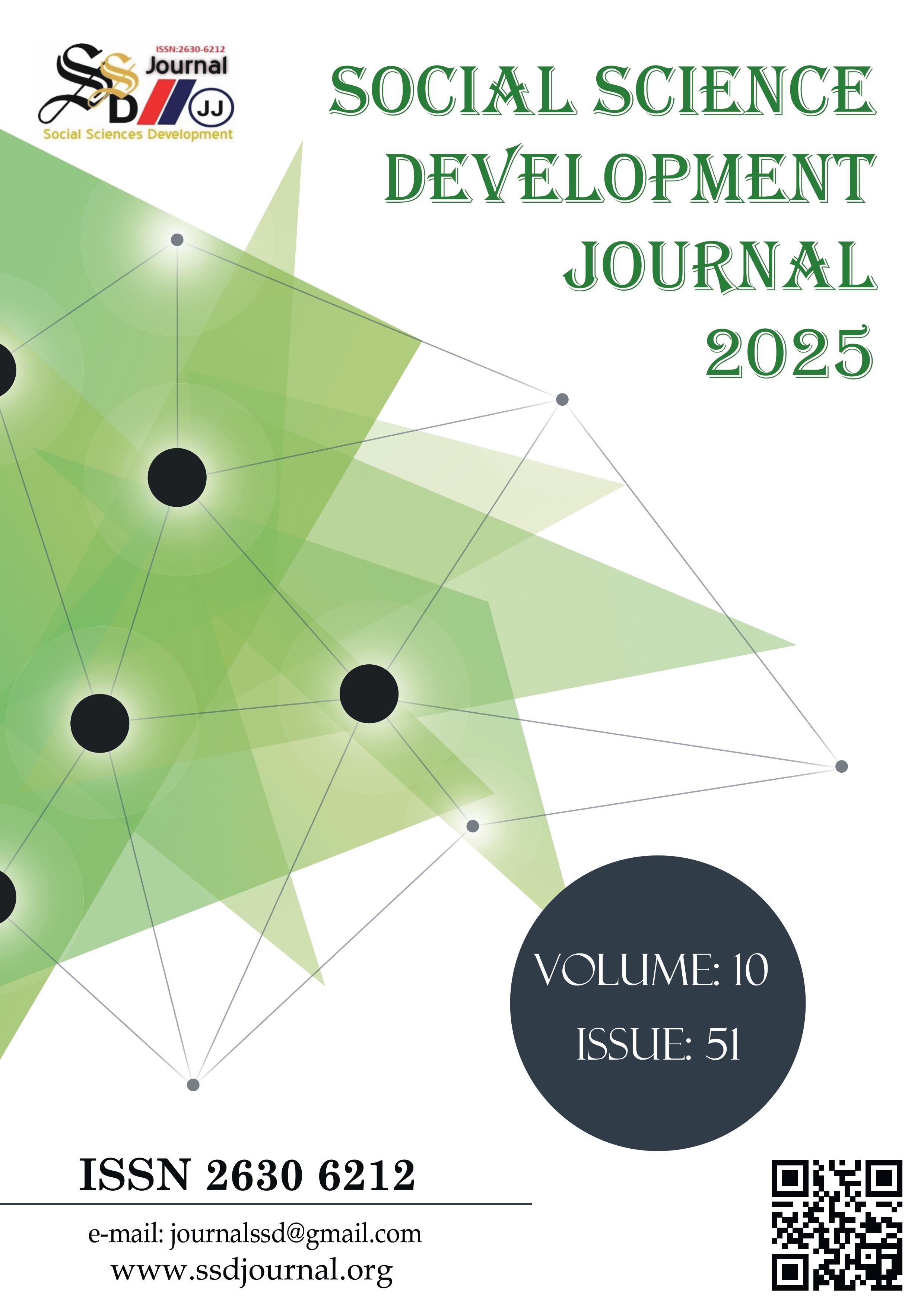ANALYSIS OF PACKAGING DESIGNS WITH NEUROMARKETING METHOD: APPLICATION OF ARTIFICIAL INTELLIGENCE-SUPPORTED EYE TRACKING METHOD
DOI:
https://doi.org/10.5281/zenodo.15925928Keywords:
Neuromarketing, Packaging, Eye Tracking TechniqueAbstract
With the development of technology, new research methods are emerging in the field of marketing. Neuromarketing, which is one of the research fields that uses neuroscience techniques instead of traditional methods to gain a deeper understanding of the factors affecting consumers' purchasing behavior, can reveal the focal points of the consumer in packaging design processes and make arrangements according to consumer perception in design processes. Consumer behavior can be interpreted by marketing experts with neuroscience tools used to see the depths of the consumer's mind. One of the methods used in neuromarketing is the eye tracking method. With the eye tracking technique, marketing experts can detect focal points on products and packaging by following the consumer's eye movements. Neuromarketing techniques, which are attracting more and more attention, are now integrated with artificial intelligence-supported software and create very valuable contributions to marketing experts in the processes of understanding and analyzing consumer behavior. The purpose of this research is to identify focal areas in consumer perception in diaper packaging designs using the AI-supported eye tracking technique, to reveal the areas consumers focus on to what extent, and to identify the most and least striking points on the packaging in terms of design. In this study, where the artificial intelligence-supported eye tracking technique method was used, three different designs of packaging belonging to a brand were selected, texts, shapes and visuals were positioned in different places on each design, and it was examined which points consumers paid more attention to and focused on. The artificial intelligence eye tracking application called NeuroVision was used in the analysis processes of this research. As a result of the analysis, it was concluded that consumers focused on various points in the heat map, clarity value and areas where attention is concentrated at different rates, the focused areas differed in each design and different packaging designs affected consumer perception at different rates.
References
Alabay, M. Nurettin (2010). Geleneksel Pazarlamadan Yeni Pazarlama Yaklaşımlarına Geçiş Süreci, Süleyman Demirel Üniversitesi İktisadi ve İdari Bilimler Fakültesi Dergisi, c.15, s.2, ss. 213-235.
Ariely, D., & Berns, G. S. (2010). Neuromarketing: the hope and hype of neuroimaging in business. Nature reviews neuroscience, 11(4), 284-292.
Aydıner, Mert (2016). Nöro Satış-Müşteri Mıknatısı Olmanın Formülü, Birinci Basım, İstanbul: Ceres Yayınları.
Becer, E. (2017). Ambalaj Tasarımı, Dost Kitabevi Yayınları.
Carter, Rita (2013). Beyin Kitabı, İstanbul: Alfa Yayınları.
Draskovic, N. (2007). The marketing role of packaging: a review. International journal of management cases, 9(3-4), 315-323.
Devrimsel, M. Y. (2020). Renklerin indirim algısına etkisi üzerine bir nöropazarlama araştırması. Etkileşim, (6), 50-81.
Erdemir, Kılınç Orhan & Yavuz, Ömer. (2016) ‘’Nöro Pazarlama’’ya Giriş (1. Baskı), İstanbul: Brandmap, Nisan 2016.
Georgiadis, K., Kalaganis, F. P., Laskaris, N. A., Nikolopoulos, S., & Kompatsiaris, I. (2024, August). Assessing video advertising engagement via Nonlinear Intersubject Correlation Analysis of EEG and eye tracking dynamics. In 2024 32nd European Signal Processing Conference (EUSIPCO) (pp. 957-961). IEEE.
Harris, D. (2007). Engineering psychology and cognitive ergonomics. Springer-Verlag Berlin Heidelberg.
Isa, S. M., & Anuar, N. N. A. (2024). Neuromarketing cues: an eye-tracking study on mother’s visual attention to organic vegetable advertisement. Neuroscience Research Notes, 7(4), 363-1.
Kavak, B., Eryiğit, C., & Tektaş, Ö.(2016). Pazarlamada Ürün Uygulamalar ve Örnek Olaylar.
Kesek, H. (2017). Nöropazarlama yaklaşımının tüketici davranışları üzerindeki etkisi: Malatya İnönü Üniversitesi örneği (Master's thesis, Sosyal Bilimler Enstitüsü).
Krämer, T., Chiossi, F., & Kosch, T. (2025). Evaluating Eye Tracking and Electroencephalography as Indicator for Selective Exposure During Online News Reading. arXiv preprint arXiv:2503.22018.
Mentzer, John T, Schwartz, (1985). Marketing Today, Fourth Edition.
Morin, C. (2011). Neuromarketing: The new science of consumer behavior. Society, 48(2), 131-135.
Olsson, A. & Györei, M. (2002). Packaging throughout the Value Chain in the Customer Perspective Marketing Mix"-, Packaging Technology and Science - An International Journal, vol. 15, pp. 231-239.
Pilditch, J. (1973). The silent salesman: how to develop packaging that sells. (No Title).
Preller, K. H., Herdener, M., Schilbach, L., Stämpfli, P., Hulka, L. M., Vonmoos, M., ... & Quednow, B. B. (2014). Functional changes of the reward system underlie blunted response to social gaze in cocaine users. Proceedings of the National Academy of Sciences, 111(7), 2842-2847.
Schafer, R. (2013). What’s new in packaging. Snack Food Wholes. Bak. 2013, 102, 54–59.
Shi, Y., Yang, P., Lei, R., Liu, Z., Dong, X., Tao, X., ... & Chen, X. (2023). Eye tracking and eye expression decoding based on transparent, flexible and ultra-persistent electrostatic interface. Nature Communications, 14(1), 3315.
Smith, P.R. & Taylor, J. (2004) Marketing Communications: An Integrated Approach 4th ed. London: Kogan Page.
Underwood, R.L.; Klein, N.M.; Burke, R.R. (2001). Packaging communication: Attentional effects of product imagery. J. Prod. Brand Manag. 2001, 10, 403–422.
Yıldırım, D. (2022). Reklam Afişlerinde Kullanılan Logo Tasarımlarının Nöropazarlama Yöntemiyle İncelenmesi: Göz Takip Yöntemi Uygulaması. Bilge Uluslararası Sosyal Araştırmalar Dergisi, 6(2), 116-127.
Yücel, Atilla, & Çubuk, Fatma (2013). Nöropazarlama ve Bilinçaltı Reklamcılık Yaklaşımlarının Karşılaştırılması. Niğde Üniversitesi İktisadi Ve İdari Bilimler Dergisi, Cilt:6, Sayı:2, ss. 172-183.
Yüksel, D. (2023). Investigation of web-based eye-tracking system performance under different lighting conditions for neuromarketing. Journal of Theoretical and Applied Electronic Commerce Research, 18(4), 2092-2106.
Zeki, S., & Romaya, J. P. (2010). The brain reaction to viewing faces of opposite-and same-sex romantic partners. PloS one, 5(12), e15802.
Zurawicki, L. (2010), Neuromarketing: Exploring the Brain of the Consumer, Springer-Verlag Berlin Heidelberg, USA.
Downloads
Published
How to Cite
Issue
Section
License
Copyright (c) 2025 Refik Erdem KOÇ

This work is licensed under a Creative Commons Attribution 4.0 International License.



